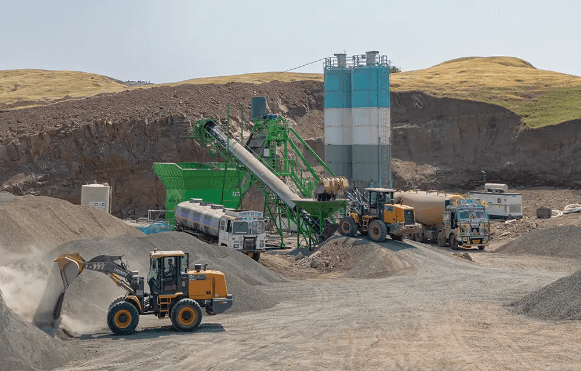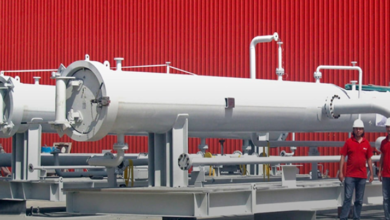Revolutionizing Construction: Innovative Approaches to Sustainable Concrete Disposal

Creative methods for disposing of concrete sustainably aim to cut waste and encourage recycling in the building sector. Techniques such as crushing and reusing old concrete for new projects minimize landfill contributions and conserve resources. These practices enhance environmental responsibility and support cost-effective construction solutions and resource efficiency.
Understanding the Need for Sustainable Concrete Disposal
Concrete is the backbone of modern infrastructure, woven into the fabric of urban landscapes globally. It seals our roads, shapes our buildings, and forms the foundations of bridges, yet the afterlife of concrete is less often considered. The traditional methods of disposing of concrete have heavily leaned towards landfilling. This is no longer viable, as landfills face capacity issues and the environmental toll of such practices becomes increasingly apparent. Concrete waste’s limited landfill space exacerbates pollution and resource depletion. Thus, understanding how to dispose of concrete sustainably is a critical pursuit for those in the construction sector aiming to reduce their ecological footprint.
Sustainable concrete disposal methods are gaining popularity due to environmental and economic benefits. Recycling concrete aggregates can replace virgin materials, saving costs and reducing the environmental burden of new aggregate extraction. This approach addresses immediate environmental challenges and contributes to a cyclical economy, minimizing waste and reusing resources.
See also: Detached New Construction ADU: A Modern Approach to Custom Homes
Innovative Techniques in Concrete Recycling
The concrete industry is embracing recycling as a sustainable practice. Mechanical recycling involves pulverizing concrete into small aggregates suitable for various construction applications. Chemical recycling processes break down concrete chemically and convert it into new building materials. This method increases efficiency and reduces carbon emissions associated with traditional cement production. The combination of mechanical and chemical recycling techniques exemplifies sustainable practices and a comprehensive approach to waste management. This reshapes the industry’s waste management practices and contributes to a more sustainable future.
Role of Technology in Transforming Concrete Waste Management
Technology plays a crucial role in enhancing concrete waste management. Innovative technologies like artificial intelligence (AI) optimize waste processing, ensuring maximum recovery of usable materials with minimal manual intervention. Mobile recycling units allow construction sites to process concrete waste on-site, reducing transportation costs and emissions. These efforts are essential for optimizing existing processes and paving the way for future advancements. TechCrunch’s discussions on recycling technology offer a broader understanding of emerging technologies in waste management. Overall, technology is essential for optimizing waste management and promoting sustainable practices.
Collaborative Efforts Towards Sustainable Construction
Sustainable construction is a collective journey, and partnerships across different sectors are proving essential. Governments, business executives, and environmental groups understand that solving the problems caused by concrete debris requires a team effort. Policies and regulations are being enacted to encourage companies to take positive steps towards sustainability. These legal frameworks level the playing field and promote sustainable behaviors by emphasizing innovation and environmental responsibility.
Furthermore, educational initiatives and public awareness campaigns are crucial for changing attitudes and promoting an environmentally conscious society. These collaborations accelerate the adoption of sustainable practices and kindle innovation and competitiveness, positioning companies as forerunners in a rapidly evolving industry.
Challenges and Opportunities in the Adoption of Sustainable Practices
Transitioning to sustainable concrete disposal has its challenges. Resistance to change and the high upfront costs often associated with new technologies can hinder progress. However, these challenges also present unique opportunities for growth and innovation. Developing cost-effective and efficient solutions can help bridge the gap between conventional practices and sustainable alternatives.
Additionally, businesses that effectively transition will enhance their environmental impact and obtain a competitive advantage as customer knowledge and demand for sustainable goods increase. The shift towards sustainability is already reshaping markets, with consumers increasingly prioritizing environmentally responsible brands.
Future Trends in Concrete Waste Management
The horizon looks promising for concrete waste management as trends continue to evolve. One expected trend is the increased integration of automation in recycling processes, which will enhance efficiency and reduce labor costs. Similarly, newer and more effective recycling techniques are anticipated, further lowering the environmental impact of concrete disposal.
Furthermore, ongoing research into alternative, sustainable construction materials may reduce dependency on traditional concrete. These innovations will continue redefining industry standards in the coming years, driving sustainability and resource efficiency improvements.
Practical Steps for Companies to Embark on the Sustainability Journey
Several practical steps can simplify the process for construction companies ready to explore the path of sustainability. Initiating educational initiatives to inform employees and stakeholders about sustainable practices can set a solid foundation. Companies can also implement policies prioritizing using recycled materials and investing in eco-friendly technologies.
Beyond internal efforts, engaging with industry associations and participating in sustainability initiatives can provide valuable insights and foster widespread change. By leveraging collective action, companies can effectively transition to more sustainable practices and contribute to an industry transformation. Acknowledging the importance of sustainable construction practices ensures that companies comply with regulations and contribute to a greener future.





